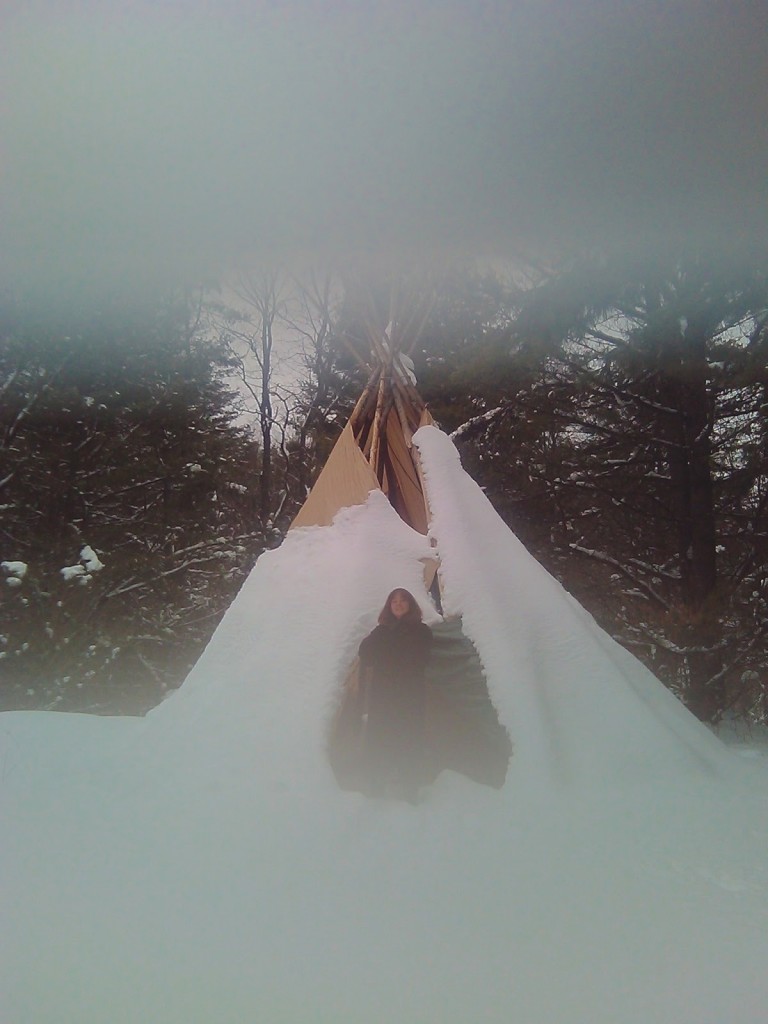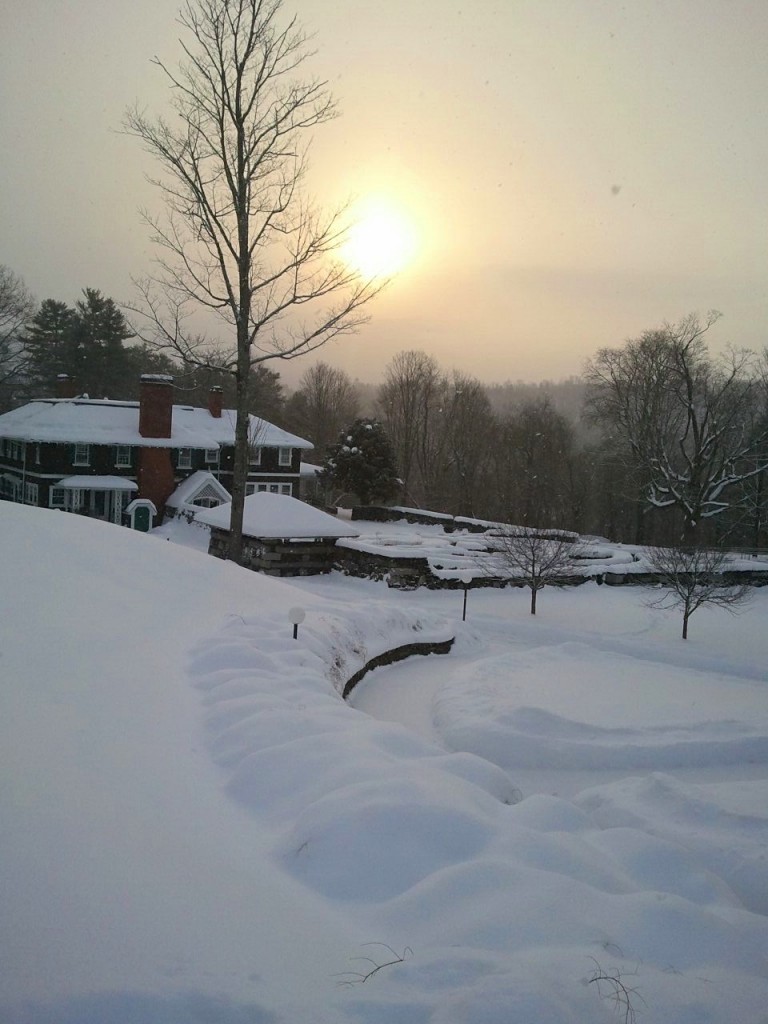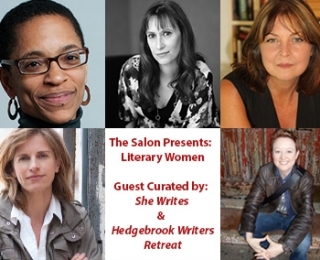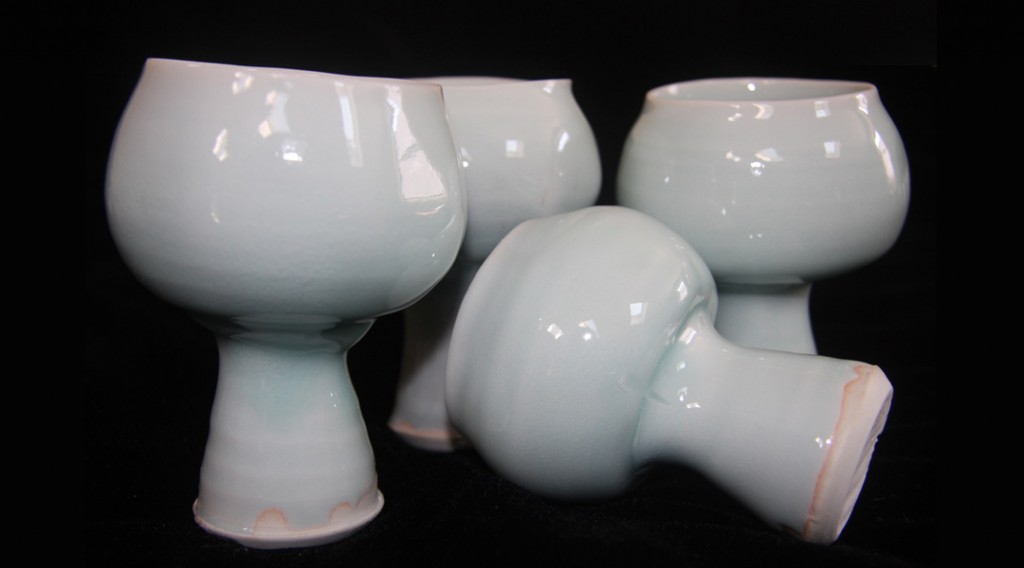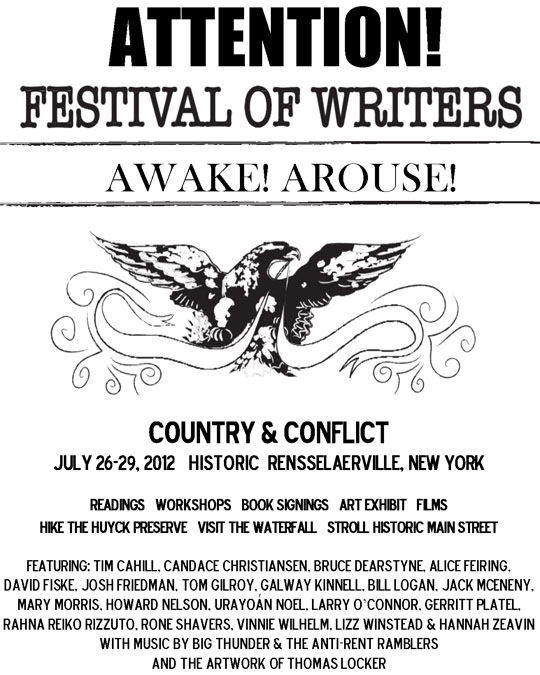Jan 23, 2013 | Goddard, Hedgebrook, The Writing Life
I am delighted to be a part of The Next Big Thing, the “authors and the authors who love them” weblog chain in which I answer questions about what I’m working on and get to introduce you to two gifted friends and writers. Ruth Ozeki tagged me for this, and her long-awaited novel, A Tale for the Time Being, is coming out in March. I got a sneak peak at it in close-to-final form, and I can say that, much as I loved her first two books, this novel of tsunamis and Hello Kitty lunch boxes, mysterious diaries and hundred year old Buddhist nuns is her best and worthy of all the accolades it is getting and will get. Buy it.
And buy the books I am recommending below by Sherri L. Smith and Bhanu Kapil (more on them in a minute). There are alternate universes out there that only someone else could dream of and they are waiting for you!
On to the questions.
What is the working title of your book?
I have two books, actually. Shadow Child is an adult, literary novel, the one Ruth mentions in her blog. It’s also the one Sherri helped me with at Hedgebrook without ever reading a word of, and that Bhanu has heard pieces of at Goddard College, where we teach together in the MFA Program for Creative Writing and where we occasionally tromp through the woods. So I guess I should talk about that one. But just so you know, there is another book out there, a fantasy series called The Matrix of Fear, which may come out first…
Give us a brief synopsis of your book?
Sisters Hana and Kei grow up in a tiny Hawaiian town in the 1950s and 1960s, so close they share the same nickname. Fatherless and mixed-race, they are raised in dreamlike isolation by their loving but unstable mother. But when their cherished threesome is broken, and then further shattered by a violent betrayal that neither young woman can forgive, their bond may be severed forever–until, six years later, Kei arrives on Hana’s New York City doorstep with a secret that will change everything.
Sounds dark. Okay, it is dark. But mysterious and exciting.
How long did it take you to write it?
Somewhere between four and thirteen years, depending on how you count. And still counting. I started Shadow Child in 2000, when it was just the story of the twins, and had about half a draft when I left for Japan in 2001 to research the character of their mother, Miya, who was to have her own book. My life derailed on that trip, and long story short, I spent the next seven years working on a memoir about Japan. The memoir went through many revisions (from terrible diary to memoir, to fiction, to hybrid, and back to memoir…) and, in the background, Shadow Child became a single novel. In 2010, I went back to it, and I am now trying to braid the stories of each twin and their mother together into a cohesive whole.
Who or what inspired you to write this book?
“Who” is my great-aunt, Mary Hamaji. I interviewed her about the Japanese American internment camps for my first novel, Why She Left Us, and she told me about her experience working for the American Occupation in Japan after the war and the effects of the atomic bombings on Hiroshima and Nagasaki. Her stories eventually inspired Miya, who survives both the internment and the bombing. And those stories eventually took me to Hiroshima, where I lived for six months.
“What” is Hawaii. I grew up there and, though I have lived in New York now for more years than I admit to, I still find my imagination returning to the Big Island. The town of Hilo offered itself as a setting for the story. Hilo was devastated by two tsunamis, one in 1946 and one in 1960, and is quite close to the active volcano, so the setting is a character in itself. I did a lot of research in Hilo, spent a good deal of time in the Pacific Tsunami Museum, and interviewed a number of people who lived there in the 50’s and 60’s. In the end, though, Shadow Child is set in an unnamed city that isn’t exactly Hilo, mostly because my story is not historical fiction. I didn’t want to inadvertently redefine the very real events that took hundreds of lives in Hilo with my fabrications.
What genre does your book fall under?
Literary fiction. Early on, an editor suggested I make it a thriller or a mystery, and I spent months trying… It didn’t work. The whole point of those genres is that everything is neatly wrapped up and revealed in the end, and that has never been my interest.
Which actors would you choose to play your characters in a movie rendition?
This is always the problem. The book is set in Hawaii, and therefore peopled by a multi-ethnic cast. But Hollywood isn’t filled with Japanese/Caucasian, Japanese, Hawaiian/Polynesian or even many Hapa actors.
For Miya, I would choose Tamlyn Tomita, one of the few Japanese-American female actors in Hollywood. Poor Tamlyn has the honor or dubious distinction of being cast for just about every “Japanese American woman in the WWII internment camp” role in mainstream movies. I can’t help her there, but I would still choose her.
For the twins, Hana and Kei, a young Hapa actress. Maybe Janel Parrish or possibly Kristin Kreuk.
What else about your book might pique the reader’s interest?
I mentioned my fantasy series, The Matrix of Fear. An entirely different story, different characters, different world, different tone, and yet… Both Matrix and Shadow Child feature a set of twins. In both, a cave functions as a central feature and a place where momentous events happen, and both take place in a tropical island paradise… What’s with all the parallels? I have no idea. But maybe when both books are published, someone will read them and tell me.
And now, for my tags:
Sherri L. Smith. The author of the acclaimed young adult historical novel Flygirl (which made me cry), Lucy the Giant, and others, turns her considerable talents to dystopian fantasy in her new book Orleans, due in March. Kirkus calls it “harrowing and memorable” and promises it will keep readers up long past their bedtimes. I have yet to read the pages, but Sherri and I have talked and talked of this book and its characters…and the sequels! Let there be several. Look for her answers next week here.
Bhanu Kapil. Unicorn, healer, teacher, champion of monsters, experimental writer who travels to the places where her characters die and lies down in the same rectangles of earth, Bhanu’s fifth book, BAN, is out of the incubator and in the hands of a prospective publisher. Light a candle for this book, a novel of race riots in notebook form that has also been inhabited not just in her mind space, but through the body: performed. Look for her answers to these questions here.
Jan 14, 2013 | Goddard, Random Thoughts, The Writing Life
As I put the snow and icicles of Goddard behind me for another semester, I was thinking about the question of whether one can teach writing. I don’t know if we taught it, or whether we simply lived it, all together, for the last eight days. I come home filled by my colleagues who have been writing in the world: Kyle Bass who put together the beautiful Cry for Peace with Ping Chong, drawing on the lives of refugees from the Congo; Susan Kim who has been collaborating on a dystopian young adult series and working with caretakers and medical staff who are supporting our veterans; Kenny Fries, poet/memoirist who wrote an opera this year; John McManus, whose novel-in-progress about gay refugees in Uganda just received a Creative Capital grant…etc., etc. fourteen times for the fourteen faculty who shared the residency with me.
I have also carried with me the work of my students, their questions, their struggles, their imagination, the high bar they set for themselves. This semester, I asked the graduates for their graduation speeches (at Goddard, every graduate give his or her own speech). These few snippets will show you why I love Goddard and what makes it special:
They said, “This has been an incredible journey.”
They said, “This means the world to me.”
They said, “We are leaving our incredible faculty, brilliant talents themselves, who truly care about the likes of us, who utilize equal parts love and cattle prod…but we’re taking each other.”
They said, “This place is magic.”
If there was a slogan I could put in an ad for Goddard it would be this:
“This place is magic.”
Jan 11, 2013 | Goddard, Random Thoughts, The Writing Life
We walked in the woods at Goddard, looking for a cliff to look out over, and we found different way to see – through Bhanu’s cracked, taped phone. What she says, on her own blog (click the picture), is this:
I know that it is important to veer, and keep veering, until you reach an interior that does not correspond to the imagination.

Dec 3, 2012 | Random Thoughts, The Writing Life
Last week, at a conference on young adult literature, key note speaker Beth Kephart (multi-award winning writer of fourteen books and more on the way), argued for the “radical significance” of stories in our new, “Sandy-Irene-Katrina world…of fiscal cliffs and residual recessions.” She asked:
“We are a globe on the verge, I’m saying, and because we are, mere entertainment for mere entertainment’s sake — for mere (forgive me) profit — strikes me as an increasingly unviable platform. Literature as easy distraction, literature as untempered horror, literature as gossip, literature as desolation, literature as isolation, literature as sensationalism, literature that leaves us stooped, numb, incinerated, angry, distracted, glassy-eyed, New Jersey Shored (and I am referring the show), and emotionally paralyzed: Do we honestly have time for this now?”
What do we have time for, and how will we spend that time so we might find a better future, not yet written? This is an essential question, not just for young people but for all people whether we are writing stories or writing our lives.
For Beth’s entire speech, Lamp Lighters and Seed Sowers: Tomorrow’s YA, click on the link.
Nov 29, 2012 | Events, Hiroshima in the Morning, The Writing Life
The Salon: Literary Women

Guest Curated by She Writes & Hedgebrook Writers Retreat
163 Court Street
Brooklyn, NY 11201
Tel: (718) 875-3677
Tue Dec 4, 7:00PM
Talking women writers with some wonderful women writers with Hedgebrook, She Writes and Goddard connections. Come join us!
Moderated by Holly Morris
Lisa Dierbeck
Rahna Reiko Rizzuto
Martha Southgate
Amy Wheeler
Lisa Dierbeck is the author of the novels The Autobiography of Jenny X and One Pill Makes You Smaller, a New York Times Notable Book. In 2010, she co-founded Mischief+Mayhem, an independent publisher run by established authors in association with OR Books. The New York Observer has dubbed it “the book industry’s new danger brigade.” Frequently anthologized and twice nominated for a Pushcart Prize, her work has appeared in numerous literary journals and in such publications as The Boston Globe, O, the Oprah Magazine, The New York Times Book Review and Time Out New York.
Rahna Reiko Rizzuto’s memoir, Hiroshima in the Morning, is a National Book Critics Circle Finalist, among other honors. She is the author of Why She Left Us, an American Book Award Winner, a U.S./Japan Creative Artist Fellow, Hedgebrook alumna, and a faculty member at Goddard College. Rizzuto has appeared widely in the media, including The Today Show, The View, 20/20, The Joy Behar Show, MSNBC-TV and PBS-TV. Her articles have been published internationally.
Martha Southgate is the author of four novels. Her newest, The Taste of Salt, was published in September 2011 and was named one of the best novels of the year by the San Francisco Chronicle and the Boston Globe. She has received fellowships from the MacDowell Colony, the Virginia Center for the Creative Arts and the Bread Loaf Writers Conference. Her essay “Writers Like Me,” published in the New York Times Book Review, appears in the anthology Best African-American Essays 2009. Previous non-fiction articles have appeared in The New York Times Magazine, O, Entertainment Weekly, and Essence.
Amy Wheeler is a playwright and the Executive Director of Hedgebrook, a retreat and residency for women writers on Whidbey Island that supports women writers whose stories and ideas shape our culture now and for generations to come. Amy holds an MFA from the Iowa Playwrights Workshop, and her work has been seen in New York, San Francisco, Seattle, Portland, and Atlanta.
Holly Morris, co-founder of PowderKeg, is a writer and editor, and a television documentary producer and correspondent. The former Editorial Director of the book publishing company Seal Press, Morris edited an eclectic list of titles on topics ranging from domestic violence and geo-politics, to award-winning poetry and international fiction and nonfiction. She also edited the Adventura imprint, which features outdoor, travel, and environmental literature. She is a longtime board member of Hedgebrook, a writer’s residency in Washington State. Her essays are widely anthologized, and she writes for numerous publications including The New York Times. Her book, Adventure Divas: Searching the Globe for a New Kind of Heroine, based on her experiences as an international correspondent, was named an “Editors’ Choice” and a ‘Notable Book of the Year’ about exploration by the New York Times. Morris is the executive producer/writer/director of the award-winning prime-time PBS documentary series, “Adventure Divas”
Sep 4, 2012 | Events, Hiroshima in the Morning, The Writing Life
“For a ceramic artist, form is a vessel for the spirit. Fire – volatile and sacred in many cultures – is the alchemy that brings it alive. The artist’s intentions, finger marks, and dreams all ignite in the kiln. When we invite hand-made art into our everyday lives – in our morning coffee, our afternoon tea with friends – we find the stillness and beauty of the present moment: meditative, ritualistic, reverential, and sacred.” – Ming Yuen-Schat
On September 8th, at 2 pm, we are reading and drinking from an art exhibit – Chalice – which includes 100 porcelain and celadon vessels of different shapes and sizes. Pick your favorite right off its velvet pad, turn it in your hands, have a cup of tea. Sit back and listen to readings from Ed Lin, Anelise Chen and me as we reflect on sacredness and spirituality in our society.
While you are there, visit 50 artists’ studios as part of the Brooklyn Museum’s Go Project. Preview the Asian American Arts Alliance’s Locating the Sacred Festival. For the full day’s program at the NARS studios in Brooklyn, check out this flyer.

The New York Art Residency & Studios (NARS)Foundation
88 35th Street, Brooklyn, NY, 3rd Floor
(Take the D, N, R to 36th St.)
For further information, please contact info@narsfoundation.org or 718-768-2765.
www.narsfoundation.org
Aug 26, 2012 | Random Thoughts
Come to Sunset Park!
On September 8 & 9, the New York Art Residency & Studios (NARS) Foundation is teaming up with the Brooklyn Museum’s GO Project, a community-curated open studio weekend event taking place in neighborhoods throughout Brooklyn. There are over 50 artist studios to visit at NARS. Come check out one of Brooklyn’s most vibrant art scenes and VOTE for your favorite artists! Visit the GO website for more information: www.gobrooklynart.org
On Saturday, September 8th from 2- 4 PM, we will be celebrating the Go Project with an afternoon of special events. Join us for readers Ed Lin, Anelise Chen and Rahna Reiko Rizzuto, from the Asian American Writers’ Workshop, as well as a spoken word performance by Buendia, a local grassroots Sunset Park artists collective.
Visitors can also enjoy drinks from a set of exhibited ceramic clay vessels by Ming Yuen-Schat, and participate in a clay workshop for children and families with Veronica Frenning – both artists whose work appears in our newest exhibition, Interpreting Rituals: The Butterfly Effect. This exhibit, part of the five-borough Locating the Sacred Festival organized by the Asian American Arts Alliance, is an exploration of what is sacred in our contemporary society.


For further information,
NARS Foundation
(To get to NARS by subway take the D, N, R to 36th St and walk one block west.)
